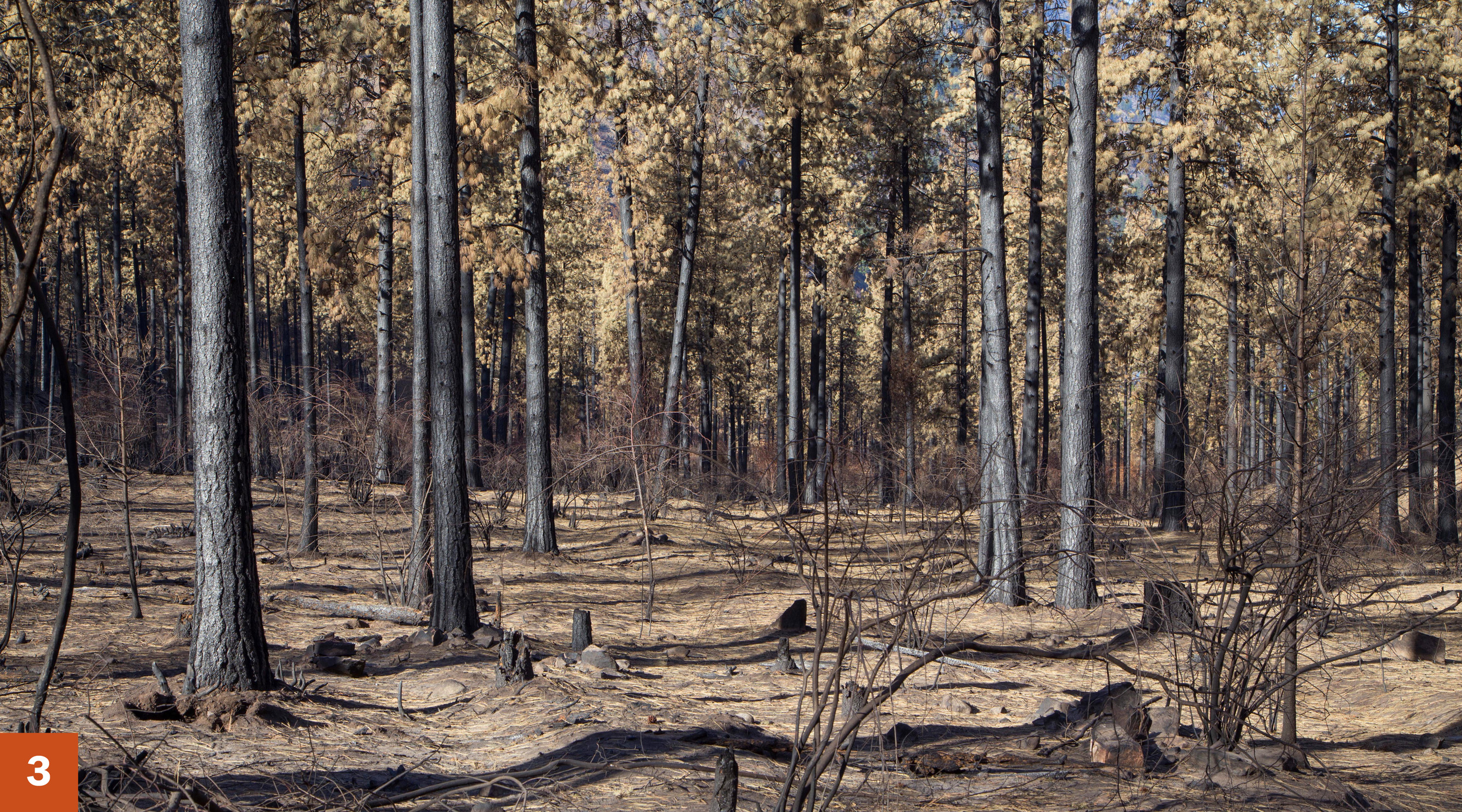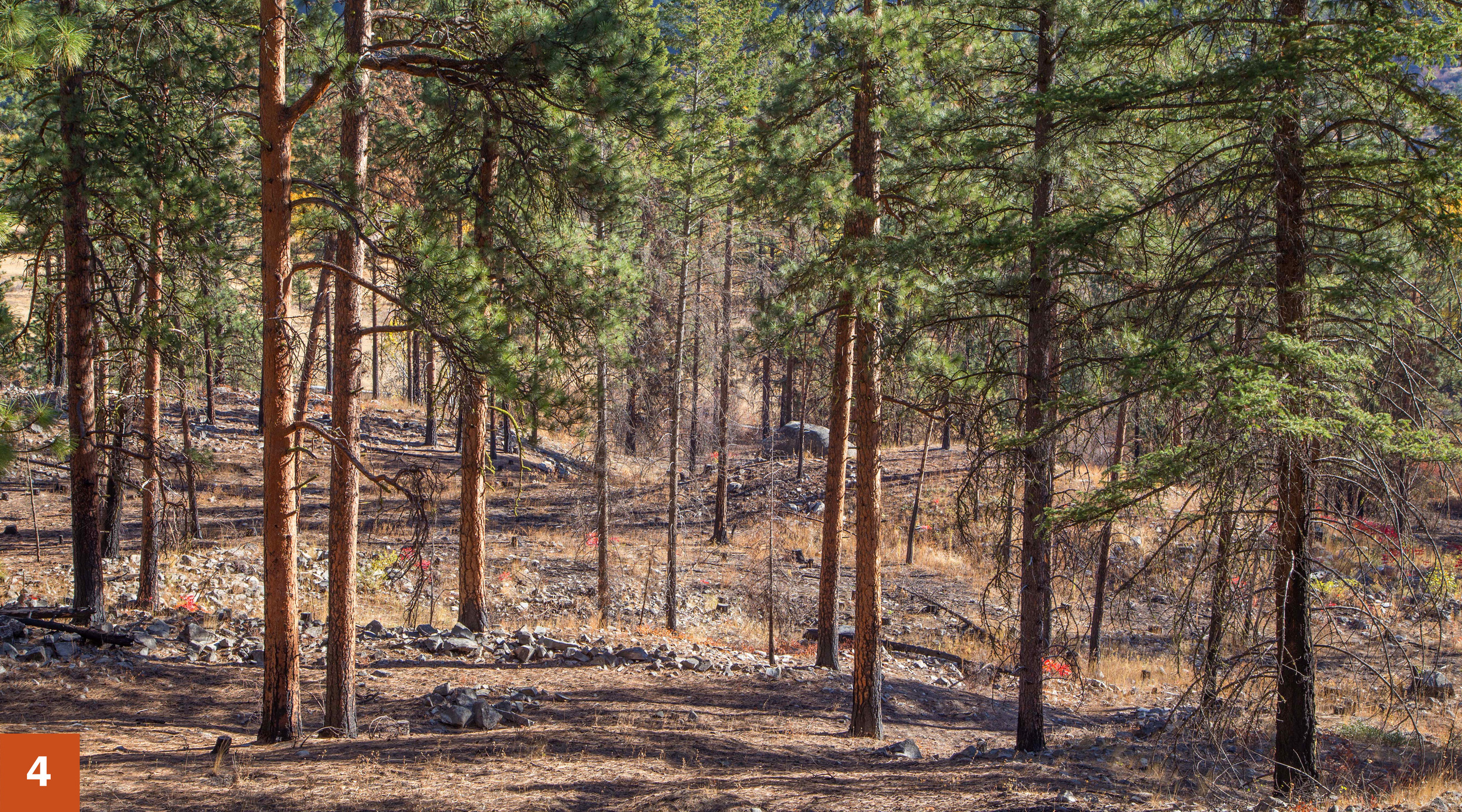Sinlahekin Wildlife Area
Washington's oldest wildlife area, this 23,000-acre site is under restoration by the WA Department of Fish and Wildlife to reduce fuels, increase wildlife habitat, and return fire to the landscape. In 2015, the areas that had been treated with prescribed fire helped stop the Okanogan Complex Fires from advancing.
Stopping Megafire in its Tracks
Photos labeled 1 and 2 depict burned areas directly adjacent to unburned areas, and show where the Limebelt Fire (part of the 2015 Okanogan Complex Fires) ran out of steam in Sinlahekin Wildlife Area.
Both sides were thinned in 2002 and 2011 to reduce fuels, thin stands, and restore some natural clumpy groupings. But due to very steep slopes and other prohibitive factors, the area on the left was not prescribed burned, while the area on the right received restorative prescribed burns in both 2005 and 2014. Photos 3 and 4 show interior views of those same left/right landscapes.
In each instance, controlled burns made the difference — between green and charred, between resilience and destruction. And once is not enough. While eventual maintenance burns are faster, less expensive, and produce less smoke, the need for fire never goes way.
Forests Need Fire
When most people think of wildfire, they think of dry forests — and there are 2.8 million acres in the Okanogan-Wenatchee National Forest alone. But there is often little discussion of why these forests (and their inhabitants) actually need frequent, low-severity fire.
- Fire thins small ponderosa pines, creating larger, healthier trees with less competition for scarce water and nutrients.
- Fire reduces ground litter allowing more understory vegetation to grow.
- Heat from induces germination of buckbrush (mountain balm) which comprises over 50% of deer's winter diets.
For more on historic fire regimes and recent fires in the Methow Valley, check out this Conversation article.






